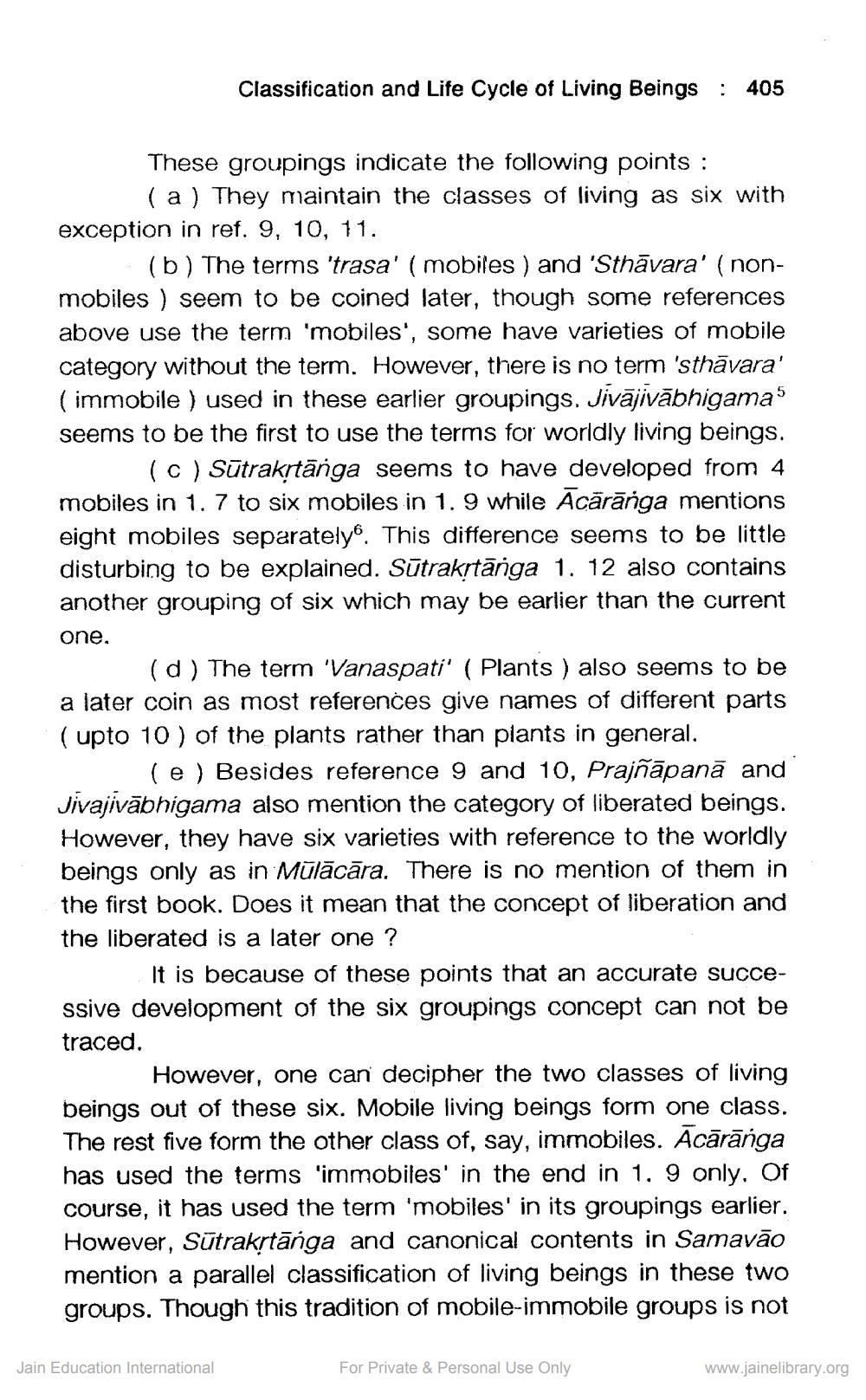________________
Classification and Life Cycle of Living Beings : 405
These groupings indicate the following points :
(a) They maintain the classes of living as six with exception in ref. 9, 10, 11.
(b) The terms 'trasa' ( mobiles ) and 'Sthāvara' (nonmobiles ) seem to be coined later, though some references above use the term 'mobiles', some have varieties of mobile category without the term. However, there is no term 'sthāvara' (immobile ) used in these earlier groupings. Jivājivābhigamas seems to be the first to use the terms for worldly living beings.
(0) Sūtrakrtānga seems to have developed from 4 mobiles in 1. 7 to six mobiles in 1. 9 while Ācārānga mentions eight mobiles separately. This difference seems to be little disturbing to be explained. Sūtrakrtānga 1. 12 also contains another grouping of six which may be earlier than the current one,
(d) The term 'Vanaspati' ( Plants ) also seems to be a later coin as most references give names of different parts (upto 10 ) of the plants rather than plants in general.
(e) Besides reference 9 and 10, Prajñāpanā and Jivajivābhigama also mention the category of liberated beings. However, they have six varieties with reference to the worldly beings only as in Mülācāra. There is no mention of them in the first book. Does it mean that the concept of liberation and the liberated is a later one ?
It is because of these points that an accurate successive development of the six groupings concept can not be traced.
However, one can decipher the two classes of living beings out of these six. Mobile living beings form one class. The rest five form the other class of, say, immobiles. Acārānga has used the terms 'immobiles' in the end in 1. 9 only. Of course, it has used the term 'mobiles' in its groupings earlier. However, Sūtrakrtānga and canonical contents in Samavāo mention a parallel classification of living beings in these two groups. Though this tradition of mobile-immobile groups is not
Jain Education International
For Private & Personal Use Only
www.jainelibrary.org




